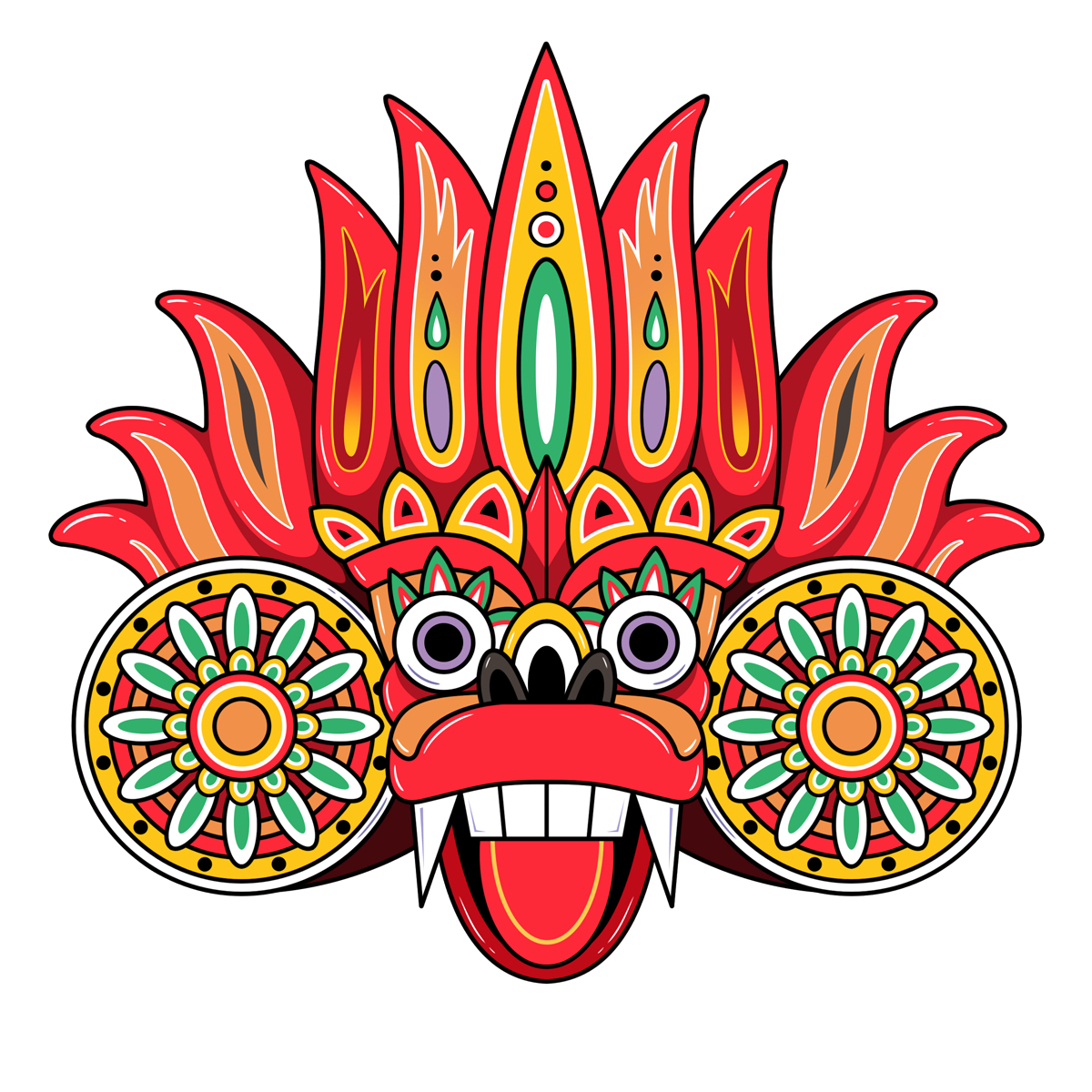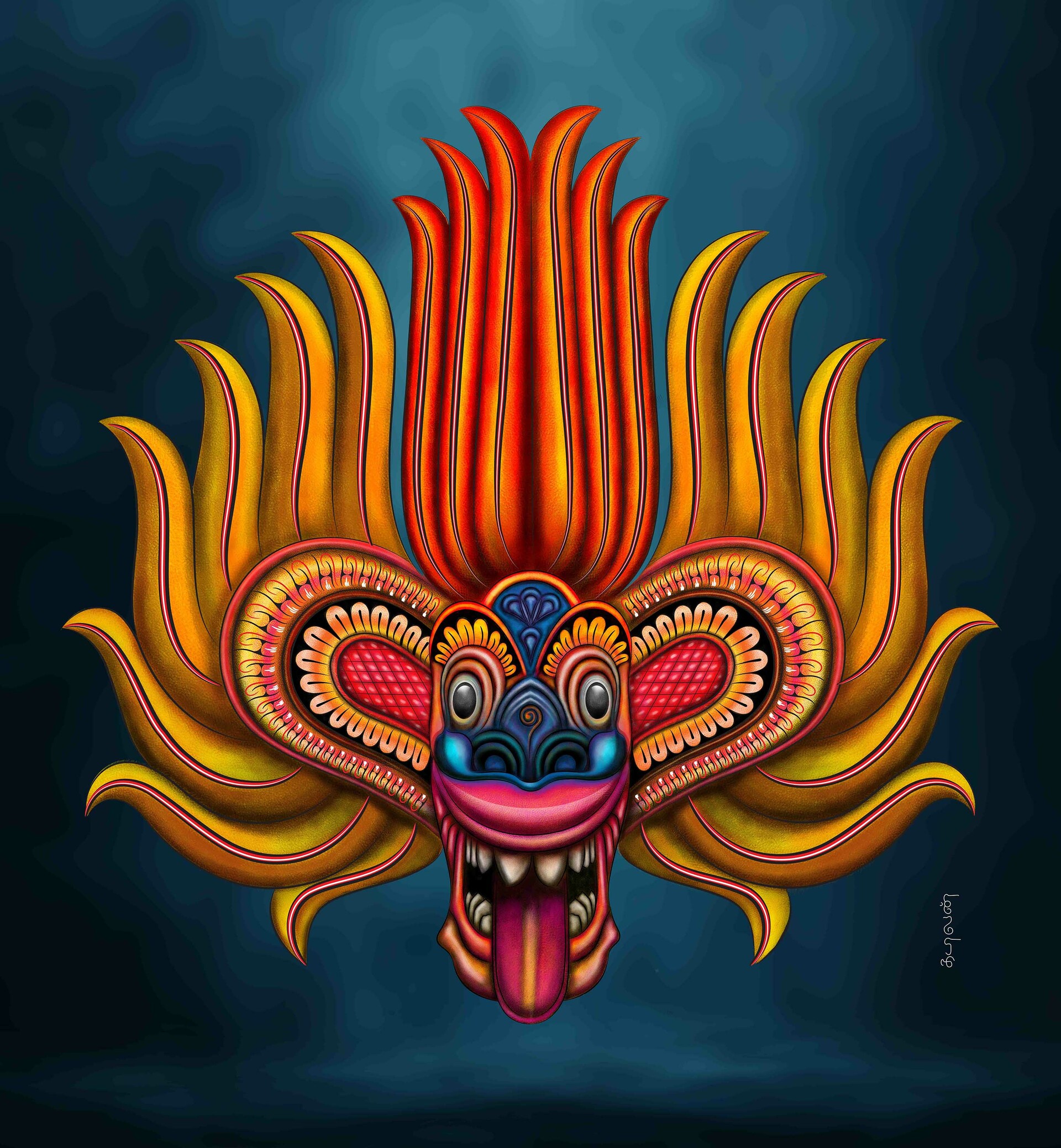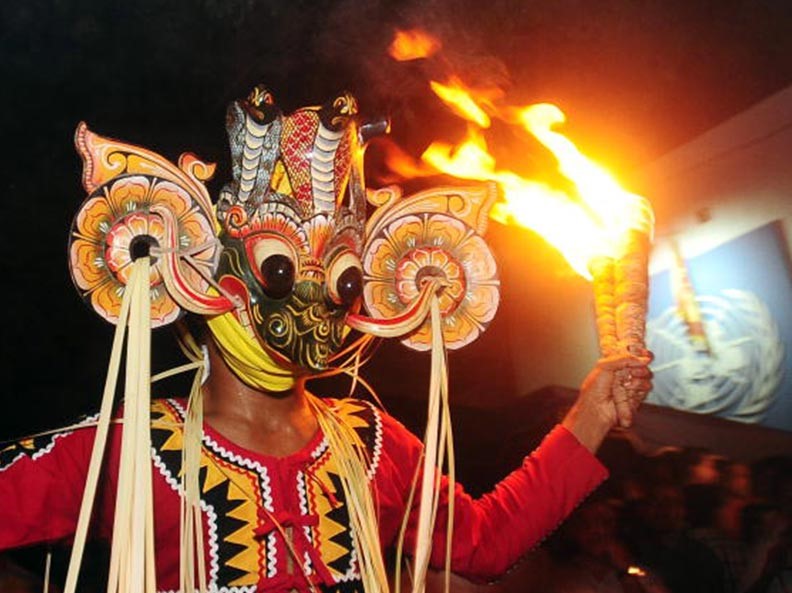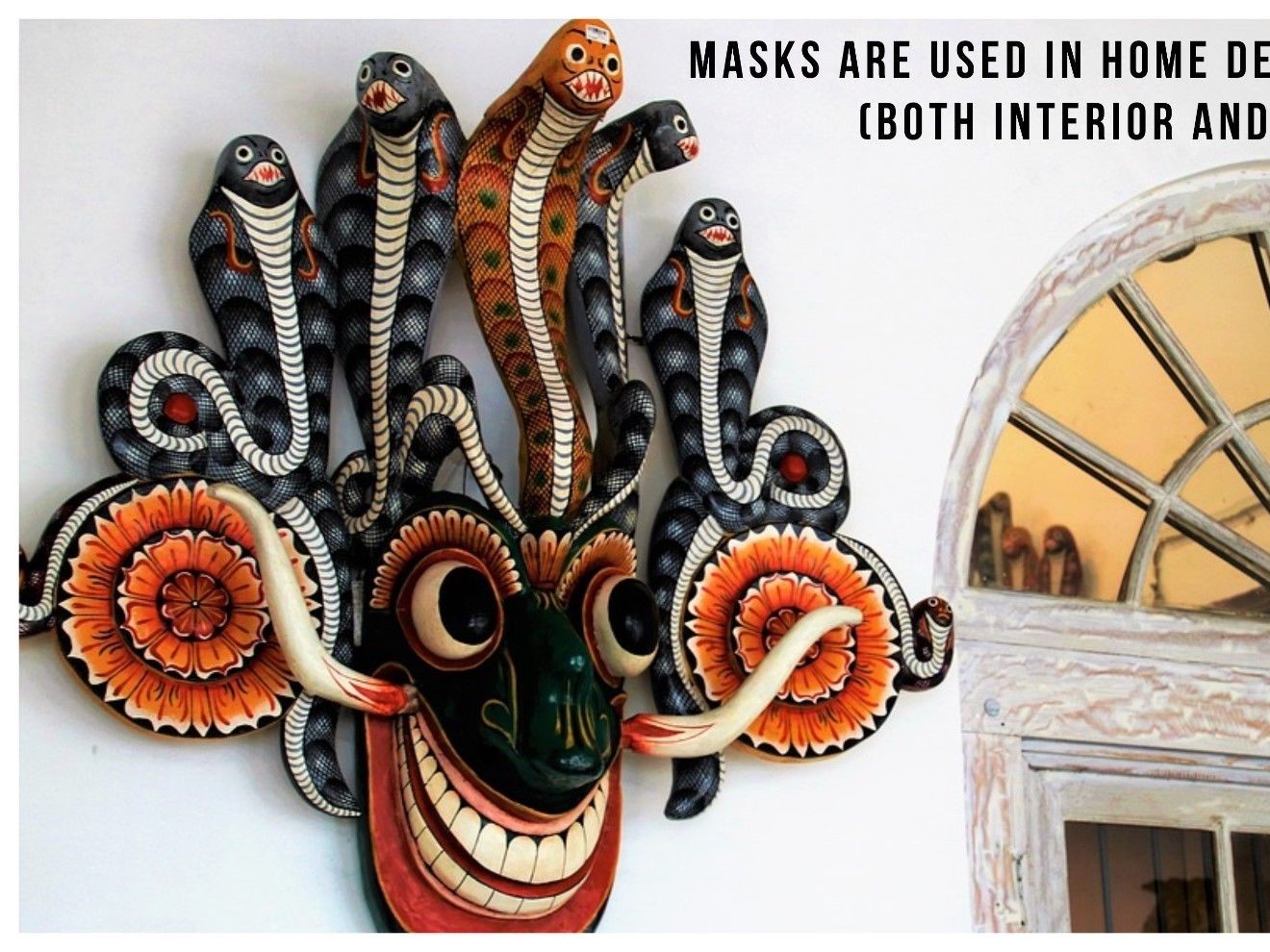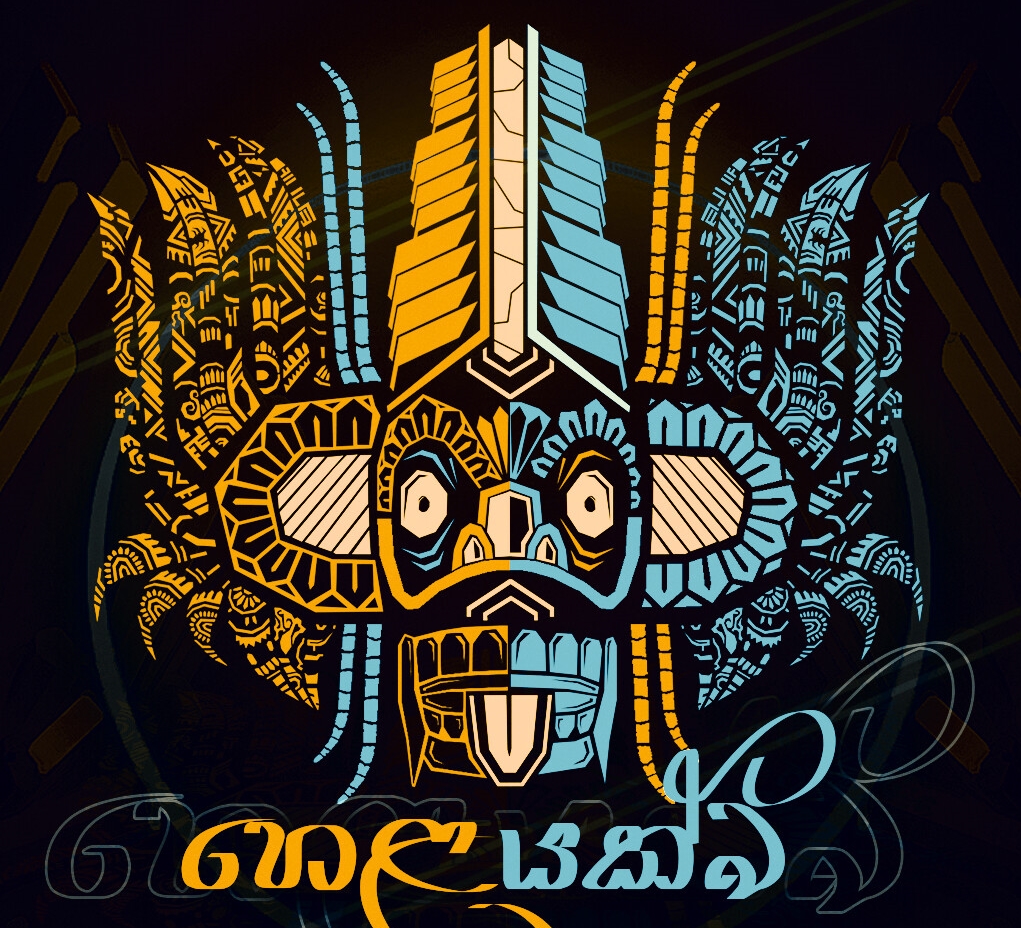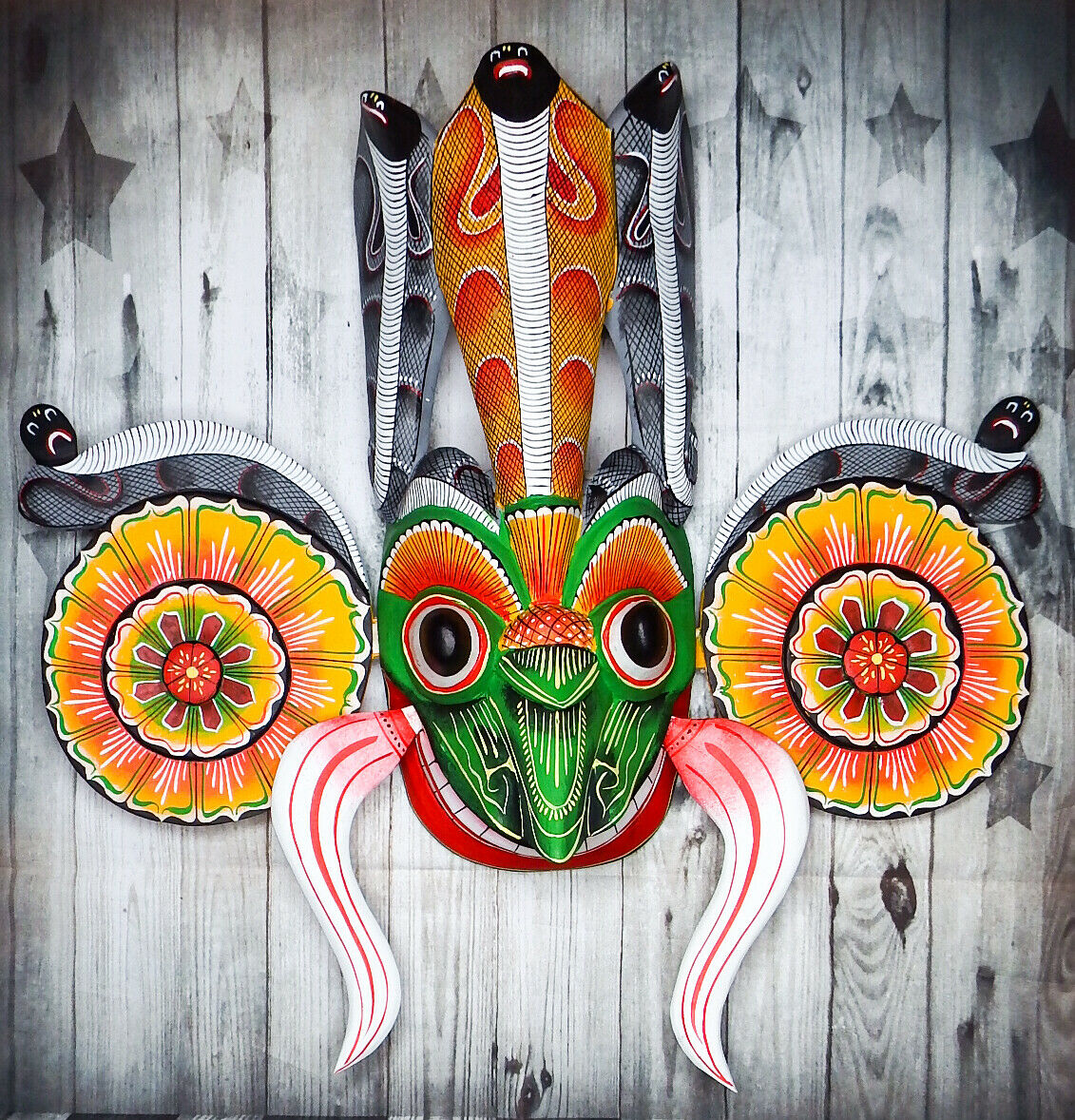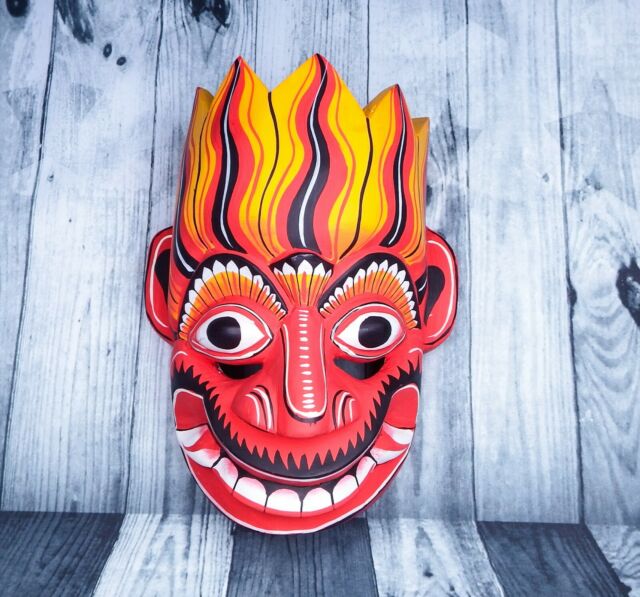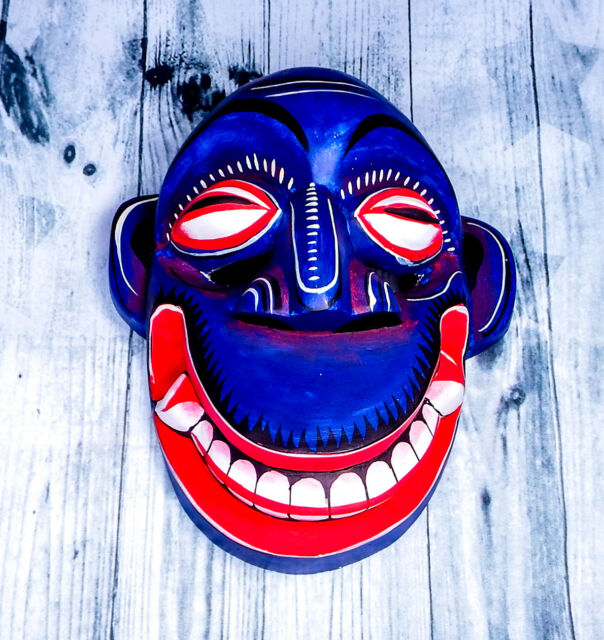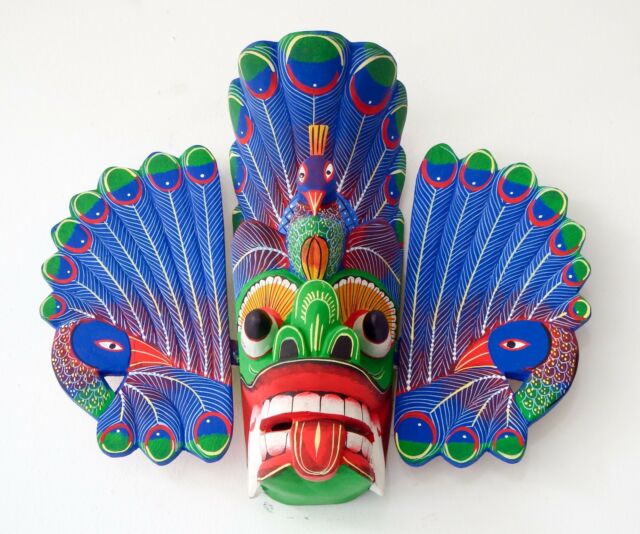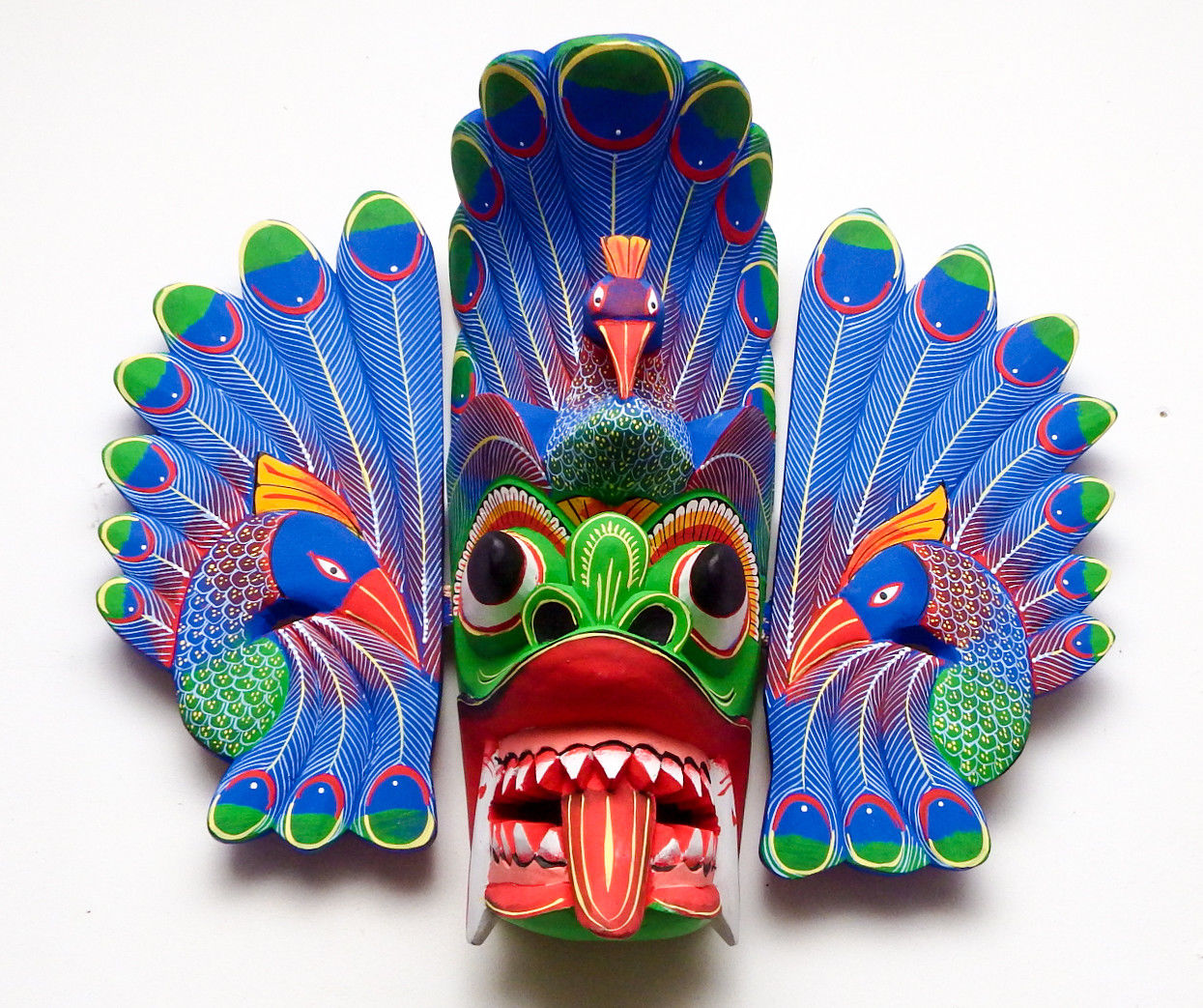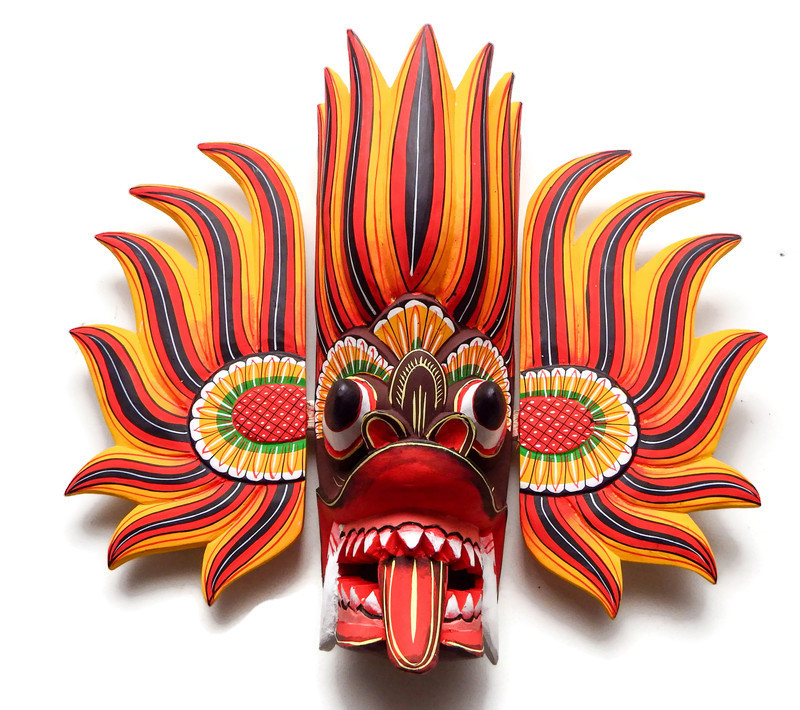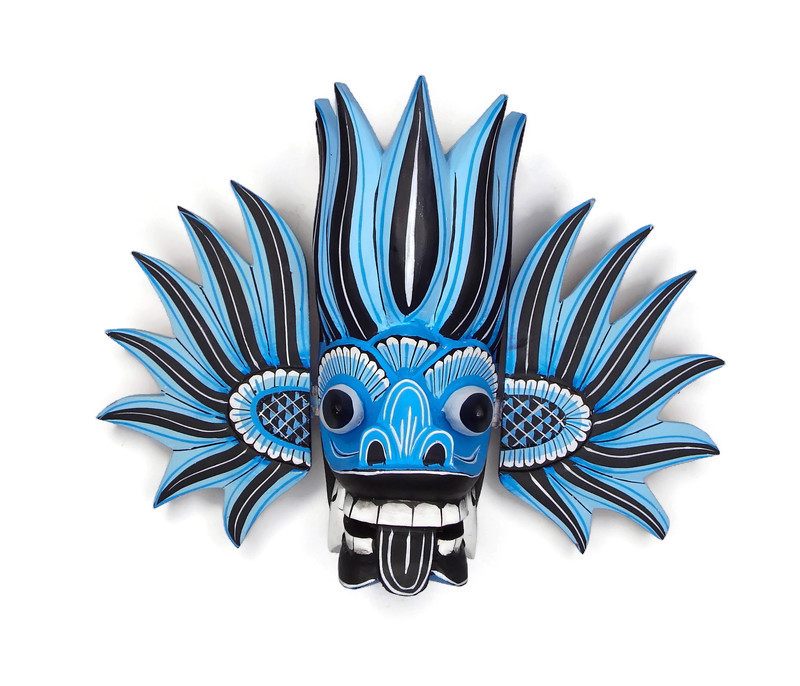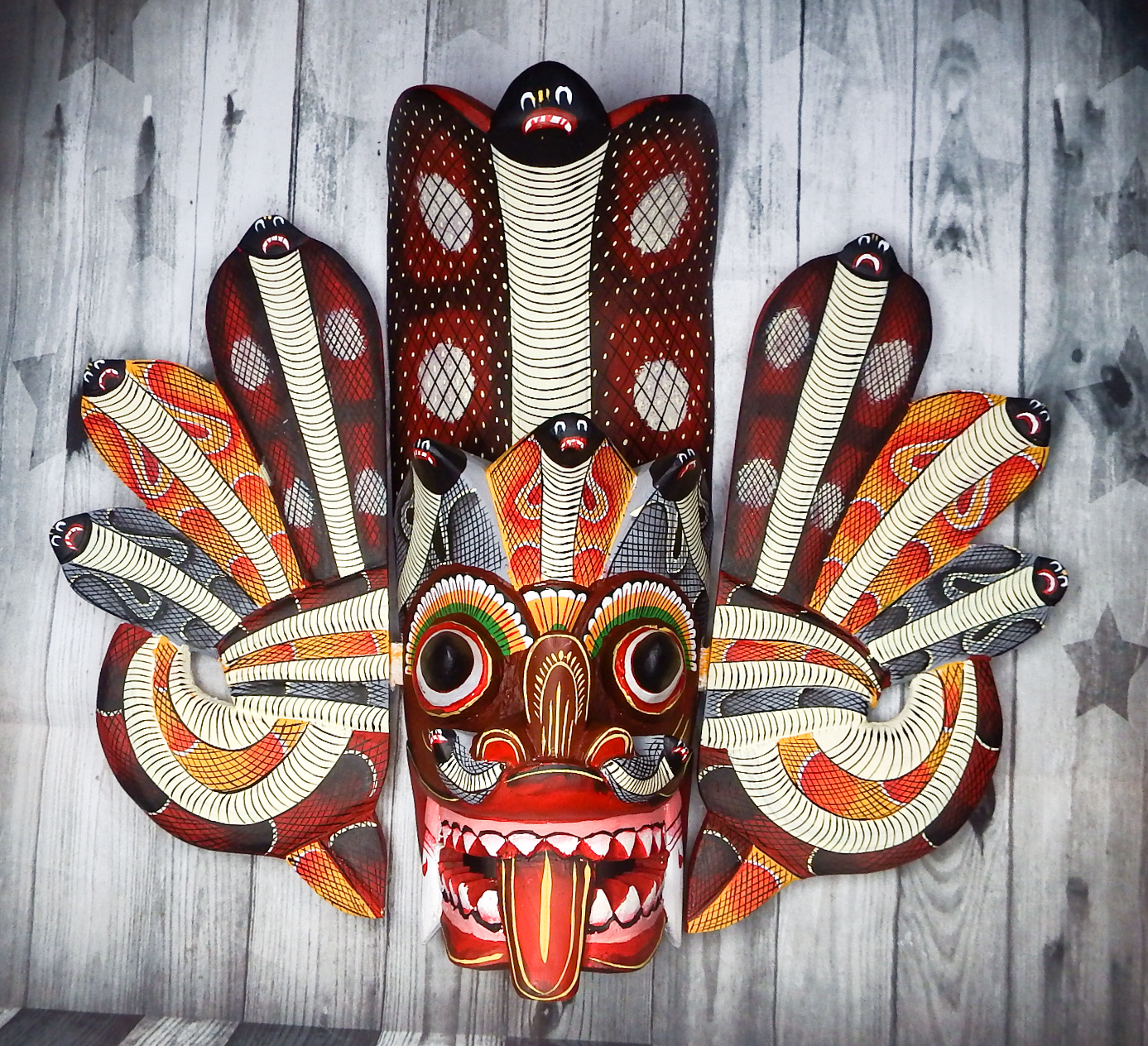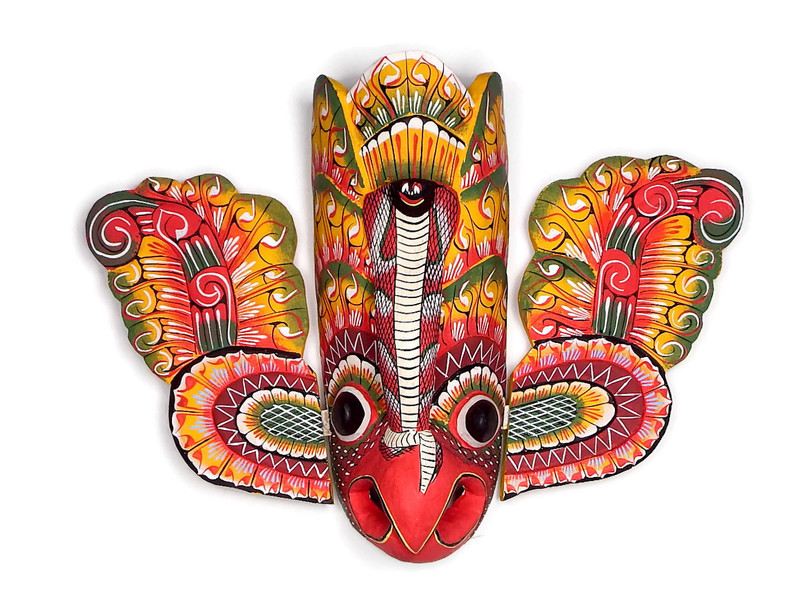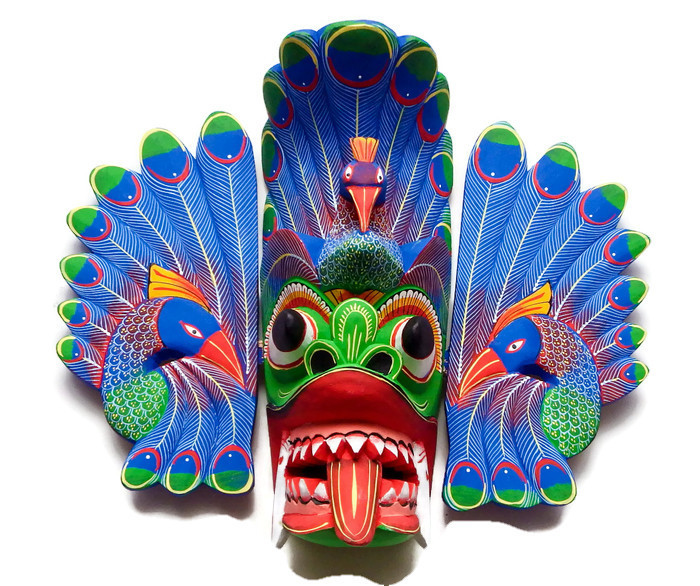Carved to heal

Since the Stone Age, human beings had the propensity to hide their identity and acquire features of animals, gods, goddesses, and supernatural beings representing deities, demons and even evil spirits.
The origin of masks is a highly complex and controversial subject among historians and anthropologists shrouded in mythology, folklore and legends. A mythical King Sankapala and his chief consort Queen Ayupala were believed to have lived in India (Dambadiva). During this era adjoining country had waged war against the kingdom of Sankapala. Queen Ayupala was suffering from a strange kind of pregnancy craving of watching a 'Mask Dance' but nobody in the whole kingdom knew of Mask Dancing.
Realising the plight of the Queen, God Sakra had invented some Masks and Lyrics and kept in the Royal Garden . These masks had been used in the Mask Dancing and after enjoying the mask dance, Queen Ayupala's pregnancy cravings disappeared. Irrespective of cultural or ethnic diversity, a mask has been a common device used the world across to hide the face of the wearer facilitating to acquire an alien appearance.
Usually the mask dancer gets a weird appearance due to the mask he wears in tune with the lengthy ritual he intends to perform. In addition the costumes and the masks vary from ritual to ritual. Masks also vary from culture to culture and they are used in exorcism to chase away evil spirits whom the villagers believed as the root cause of diseases and numerous other afflictions.
Masks had also been used in the performance of funeral and fertility rites even during the prehistoric era all over the world. Gradually, masks became an indispensable item in pageants and functions of cultural and religious significance.
As usual, Ambalangoda on the south coast of Sri Lanka became the repository of traditional forms of folk arts and crafts. Traditional mask carvers of Ambalangoda are well versed in both mask dancing and singing age -old folk songs and recite ritual poems they have inherited and memorised for generations.
Late Ariyapala Gurunnanase inherited the folk arts and crafts from his grandfather Juwan Wadu Ondiris de Silva. He was the creator of a unique belfry which is considered as a rare work of art still stands majestically at the entrance to the Ambalangoda Sunandarama Maha Vihara. Late Gunadasa Gurunnanse represented the Maha Ambalangoda tradition while Master Craftsman Juwan Wadu Ariyapala Gurunnanse represented the Hirewatta tradition. These traditional craftsmen at Ambalangoda revealed that they derived a great inner satisfaction by carving masks which facilitated them in their successful performances of ritual mask dancing. Traditional master craftsmen of Ambalangoda handled their tools with a ritualistic fervour believing that the tools also possess certain mystic powers affecting even the craftsmen.
Both Ariyapala Gurunnanse and Gunadasa Gurunnanse were staunch believers of age-old mythology and mystic powers of masks and mask dancing originated as a healing ritual in Sri Lanka. Mask Dancer plays the role of the exorcist in curing the patients believed to be suffering from numerous diseases due to the evil spirits. Mask Dancers wear different masks in accordance with the rituals they perform.
"Raksha Masks" (Demon Masks) are carved having all the weird and bizarre features intricately embedded in them by the craftsmen at Ambalangoda. Traits of mythology relevant to diverse cultures could also be traced in every form of masks.
Garunda Mask is used in ritual dancing to drive away cobra demons thus preventing cobra bites bringing sudden death to the village folk in Sri Lanka. The Gara Raksha mask is used in ritual dancing to dispel the evil influence believed to have been caused by evil mouth and evil eyes still commonly believed by the majority of the people in the country. Gara Yaka (Gara Demon) was originally considered as a demon but later on due to its meritorious acts, it was allowed to join the pantheon of gods.
Gara Mask is used in Kolam Drama performances as well. In the pantheon of super natural beings, Yakkas or Demons belonged to the lowest strata and it was attributed to their anti-social and nefarious behaviour patterns during their former birth.
Even in modern Sri Lanka majority of the people have become very superstitious for unknown reasons including the politicians who strongly believe on evil spirits and take part in traditional rituals.
Sri Lankans still believe that demons and evil spirits have the power to cause diseases and engaged in elaborate healing rituals. Yakkas or demons cause certain diseases for instance the 'Suniyam Yaka' is believed to cause paralysis and deals on sorcery.
Mahason Yaka's role is to frighten people and make them suffer from fever. Usually Mahason Yaka haunts grave yards. Riri Yaka is believed to cause disease related to the blood circulation of humans. Kalu Yaka is believed to cause ailments relevant to females and babies. Ahimana Yaka frightens people and cause mental constraints. The person who has mastered the rituals dealing on spirits and demons and exorcism is known as 'Kattandiya' or Shaman.
Kattandiya or shaman reciting the ritual poems calls the Yaka to the residence of the patient and reveals that the disease is due to the evil influence of the Yaka (demon). During the performance of elaborate healing ritual the Yaka's role is performed by the dancer wearing the relevant mask and the costumes while the Kattandiya or the Shaman recites ritual verses to the tune of the blasting sound of the drums creating an eerie atmosphere.
The demon leaves the patient after appeasing with due offerings demanded by the demon.
Ritual dance performers believe that there is a massive transformation in them both physically and psychologically a sort of a trance whenever they wear a ritual mask and dance to tune of drums. Both the patient and the Kattandiya are under a trance in the height of the ritual performances.









